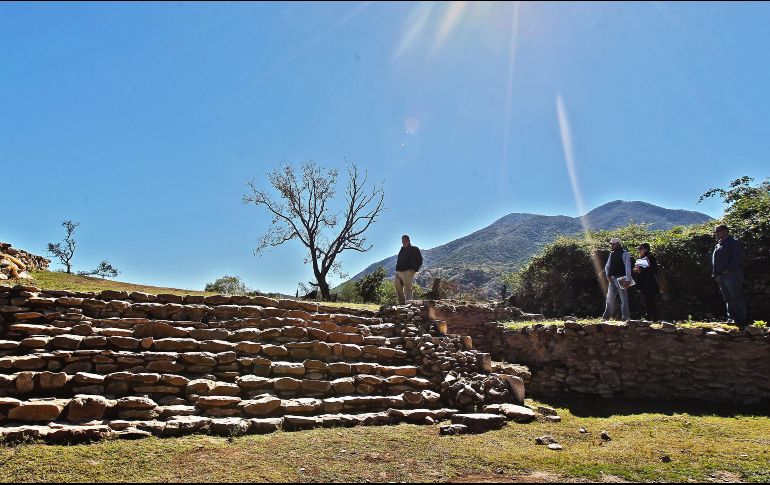Access to the so-called Archaeological Center is difficult because it is 1,845 meters above sea level
By: EFE
July 21, 2020 - 11:20 a.m.

Two towers that reveal that the god of the Underworld was venerated at the top of the mountain are some of the remains and found by inhabitants of Santa Cruz Huehuepiaxtla, in the central Mexican state of Puebla, hidden for centuries in Cerro de la Peña .
These archaeological remains dated to 500 AD, among which these two towers and stones stand out with the engraved image of a person with horns, claws and loincloth , are the most complete pieces found in the place and recently released by researchers and inhabitants of the tiny town.
José Alfredo Arellanes, a researcher at the National Institute of Anthropology and History (INAH), revealed on Tuesday that the first studies show that the site is made up of seven pyramids and a ball game, essential for pre-Hispanic leaders .
"When we reach the top we can see the ceremonial area, that is, where the temples and palaces of rulers were located," said the archaeologist.
Access to the so-called Archaeological Center is difficult because it is 1,845 meters above sea level , so it is necessary to climb or walk almost two and a half hours along a rocky path in which there are also remains of ancient vessels.
For now, they have found images carved on walls and floors that reflect the way of life of the Teotihuacan and Zapotec cultures , possible inhabitants of the place.
Although the damage of the weather and the climate have vanished some remains, signs remain, such as 87 glyphs, as the signs engraved or painted on the infrastructure are called.
"You can see what are inscriptions on the north, northeast and top slopes, those inscriptions are from the ñiuñe script Ñiuñe in Mixteco translates as hot or hot land and it is a unique style," said Arellanes.
Archaeological challenge
The Mixtecos, so called because they live in Mixtecapan (country of the Mixtecos) or Mixtlán (place of clouds) occupy a region of about 40 thousand square kilometers that encompasses the states of Guerrero and Puebla.
For this reason, reaching the tip of Cerro de la Peña implies accessing the best view of the Mixteca of Puebla , with its chain of mountains that touch the clouds and the river.
But the terrain conditions are also a challenge to study the remains .
Gabriel García, guide of the Archaeological Center, indicated that there are many vestiges that they are barely discovering because only one archaeologist has come up who gradually explains the pieces and the possible existence of others.
INAH Jalisco responds to federal cut
"There is a stone carved with an image of an iguana, and just like an eagle, and on the other side of the rock there is a Bat God or God of the Night, just as she has the shape of a woman," said the expert.
Archaeological wealth
Due to its location and history, Puebla is one of the richest states in pre-Hispanic heritage , with eight archaeological zones recognized by the Cultural Information System of the Government of Mexico .
In the entity, with more than six million inhabitants, there are almost a million indigenous people, with Nahuatl, Totonac and Mazatec as the most numerous towns.
For this reason, the councilor of Axutla, Aracely García, -municipality to which Santa Cruz Huehuepiaxtla belongs- shared that it is a pride to have in its territory so much history to provide the country with more information about its ancestors.
For this reason, he stressed the importance of the support of the authorities for the investigations, including those that are being carried out in Cerro de la Peña.
"Vestiges or images carved in stone is what makes the place special and therefore (we must) invite people to get to know our Archaeological Center, better known as Cerro de la Peña," he concluded.
https://www.informador.mx/cultura/Descubren-vestigios-prehispanicos-en-un-recondito-cerro-de-Puebla-20200721-0050.html
 = new reply since forum marked as read
= new reply since forum marked as read
